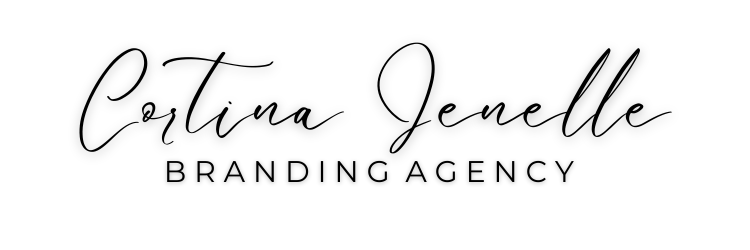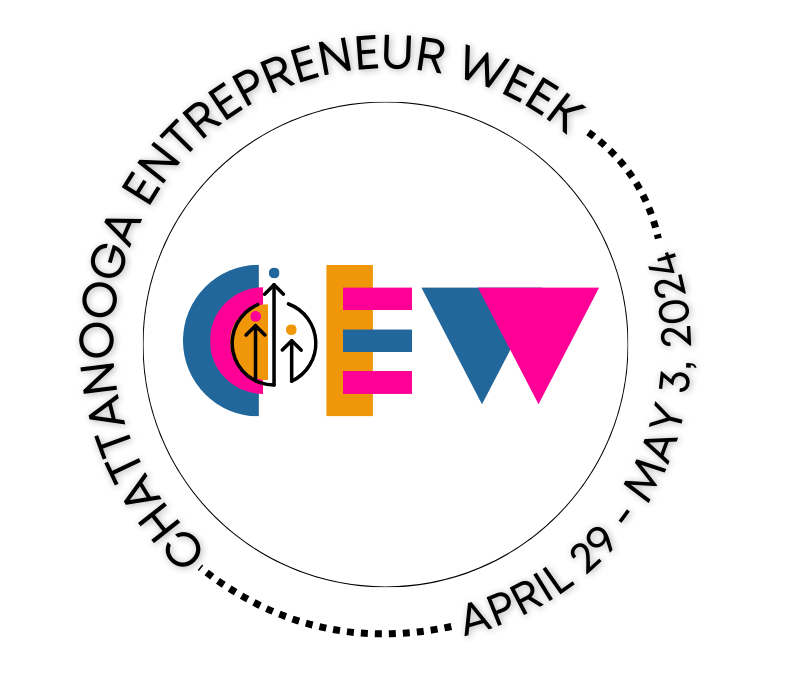
by Cortina Jenelle | Apr 1, 2024 | blog, business, entrepreneurs, imagination
It’s always a win-win when I get to do branding and web design work for a cause that I’m incredibly passionate about. I’m not privvy to have favorite clients butttt, I’m really honored to have been part of the work with the inaugural Chattanooga Entrepreneur Week, produced by Chattanooga Business Resource Collective and happening the week of April 29th to May 3rd, with main events @ Finley Stadium & First Horizon Pavilion.
I fell in love with entrepreneurship at the ripe age of 12 years old.
Working inside of my grandmother’s catering business for years and witnessing her grit, service, abundance, hard work and purpose made me want that for myself, even though I didn’t know it at the time. This woman was able to travel and share her love of cooking with some of the dankest fried catfish plates at festivals, events and gatherings all along the East Coast and often reminded me how risky it was being a Black woman in business from the rural South. At one point, I worked in corporate and in nonprofits and hospitality and sales and customer service and healthcare and social work and tech/IT. Trying…HOPING…that I could get a job, and stay in that job long-term, retire from said job and have a simple, quiet life.
I tried to keep my distance from entrepreneurship. Truly, I did.
But God had other plans. And I’m glad He did.
Entrepreneurship represents so many things for, and to, me now. Maybe the three most important reasons I love entrepreneurship and see it as upward mobility in ANY community are:
✅ It’s one of the best ways to solve our own problems.
✅ It’s one of the best ways to build generational wealth.
✅ It’s the best way to serve and support our neighbors and positively incentivize experts in their craft to keep developing their craft.
All things considered, I’m excited for the upcoming lineup of events at the inaugural Chattanooga Entrepreneur Week, presented by Tennessee Valley Federal Credit Union (TVFCU). The main conference and most events are FREE! Schedule of events and more details are available at www.chabusiness.org/cew.
Branding, graphic design and web design by yours truly 🎯 💫 🚀
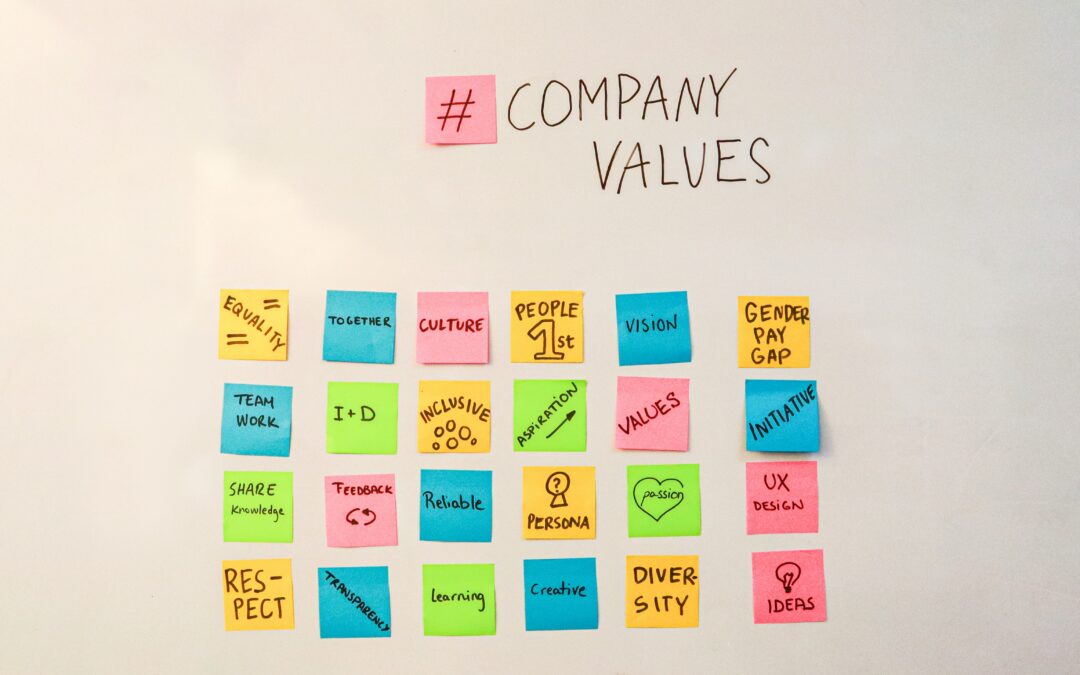
by Cortina Jenelle | Mar 21, 2024 | blog, business, facilitation
Sharing one of my facilitation hacks that has helped me build a dynamic portfolio of proven impact with community-led projects –
Before I facilitate with a new group, I always hold an orientation or onboarding session where I’m getting to know the participants before the facilitation work begins.
If I can’t get together with the group in-person or there are scheduling conflicts, I will host us on a Zoom call or send out a survey with some key questions that everyone fill out –
💥 their goal of the work;
💥 challenges or concerns they have about the facilitation;
💥 brief personality test;
💥 communication style;
💥 learning style;
💥 a few random samples in a “This or That” format (i.e. video clip and reflection or brief article and written questions).
Usually, this is a fun time! I’m playing a special playlist I’ve made for the group (and people ALWAYYSSS ask for the link after 😎 ) and I’ve dressed up in festive attire, even if it’s over Zoom.
And low key, I’m setting a celebratory tone for our heavy lifting, I’m building trust with the group as the facilitator and the group is building rapport with each other in ways they may not get to do in their day-to-day on the job. By the end of it, I’ve gathered a TON of data about the group – through written answers to the survey, observations of subtle group dynamics and noting any verbal side-bar dialogue that we’re having.
All of this shapes the facilitation process and none of it has failed me yet!
Photo by Walls.io for Unsplash
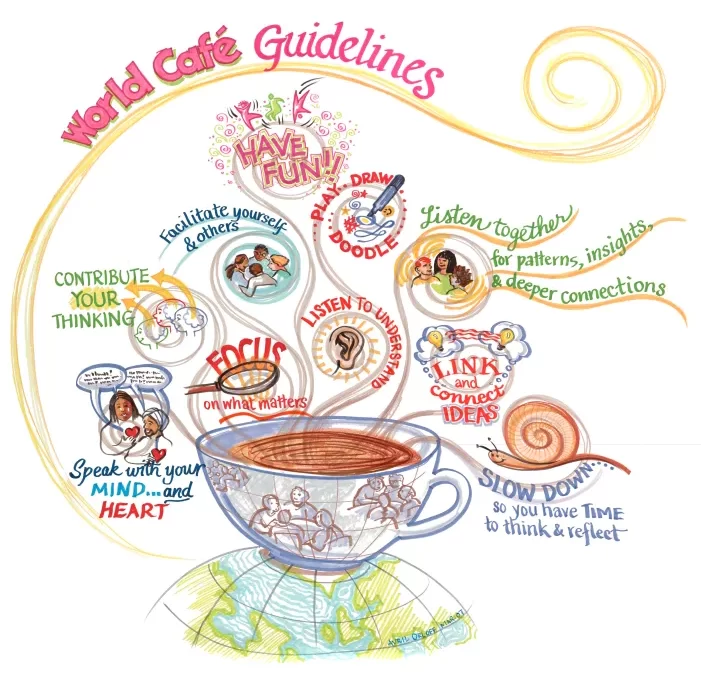
by Cortina Jenelle | Feb 13, 2024 | blog
Do you know about World Café?
Most people haven’t and I think it’s one of the most unintentionally, best kept secrets in the realm of team building, community organizing and organizational development. It’s a powerhouse of a tool and all it takes is a few sheets of easel pad paper; some
markers, crayons, colored pencils; a host/facilitator; and willing participants. The setup for a World Café session I led last year at The Chattery for some non-profit leaders is pictured below ✨💡🚀
World Café is built on the assumption that people already have within them the creativity to confront even the most difficult of challenges; that the answers we need are available to us; and that we are wiser together than we are alone.
This builds on the Creative Community Model, which I’m trained in, and dive into here.
The World Café is based on a set of ideas and practices that remind us of the power in simply having conversations with one another, where the goal is to address challenges, conflict or new ideas through a hosted dialogue that engages all of our senses. The concept? Simple. The setting and design? Wildly unique.
Imagine walking into a room with immaculate ambience…flowers on the tables, music playing, soft lighting and tasty refreshments. It may look and feel like you’re sitting down for a meal but instead, the butcher (or easel pad) paper on the table stares back at you with a hanging question. It’s your wisdom that’s desired. And that full feeling in your belly comes not from a plate of food, but that unique sense of satisfaction when ideas and connections are firing off around the room. It is unlike any other experience I have ever seen and one of my favorites to facilitate. Truly, we all leave with a harvest…whether it’s a nagging operational challenge sorted, a community issue in question, answered…or new connections made with people we may not have dined with otherwise. The shift is palpable. And the impact is invaluable.
Learn more about the World Café method here – https://lnkd.in/ee5QT65H
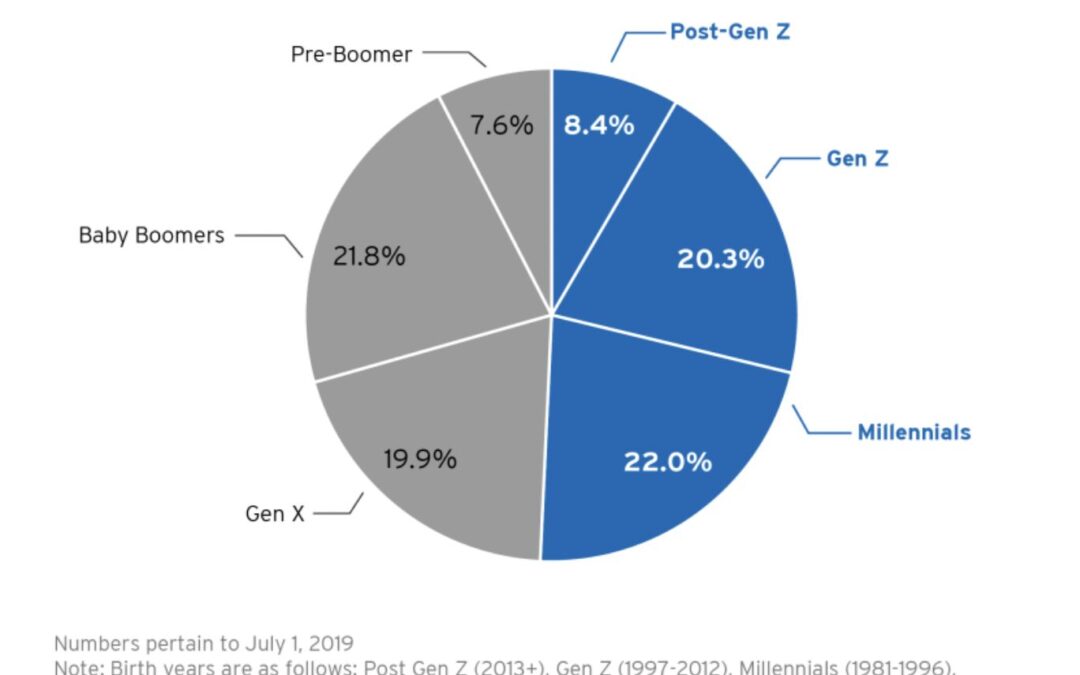
by Cortina Jenelle | Dec 17, 2023 | blog
Did you know that millennials surpassed the baby boomers as the largest age group in the United States, in 2019? And that millennials, Gen Z and younger make up 50.7% of the population, in other words 166 million people?
Millennials are those born between 1981 and 1996 (yep, that includes me!)
And Gen Z are those born between 1997 and 2012 (most of them are “adult” enough to enlist, vote, buy age-restricted products and may be in college)
Now, let me ask you…how many millennials do you have on your Board of Directors?
How many millennials are in a decision-making position at your company?
How much of your marketing and advertising dollars are in places, or better yet, spoken in ways the millennial ear will hear?
How many millennials, or Gen Z, do you count around the table at Council meetings, neighborhood association meetings or running for office?
How many of you have been trying to put the shifting tide off for as long as possible?
Here’s the thing. This post is not meant to shame anybody about where their gaps in inclusion are or to point fingers about who might still be living in a way-back time machine. The point of this post is to bring *awareness* to the fact that the largest group of decision-makers in our country are largely, vastly underrepresented in positions of leadership and future-facing decision-making in our communities.
And this is concerning.
Not just for me, as a millennial that has seen looks of my elder counterparts when I’m the youngest one in the room, or at the table…or as I’m building my own table. Intergenerational leadership should be the norm. And in fact, with Boomers and Gen X still at work, it is eventually going to be inevitable. But there is value in seeing what we can learn from one another and building together.
The old narrative about millennials being lazy and apathetic just isn’t true anymore. And from my perspective, never was. Instead, I ask you, how are you calling millennials and Gen Z IN? If we’re not busy enough, or engaged enough, or don’t seem to care enough, by all means, please give us more to do. The future is now. What we leave undone, the younger ones will have to carry.
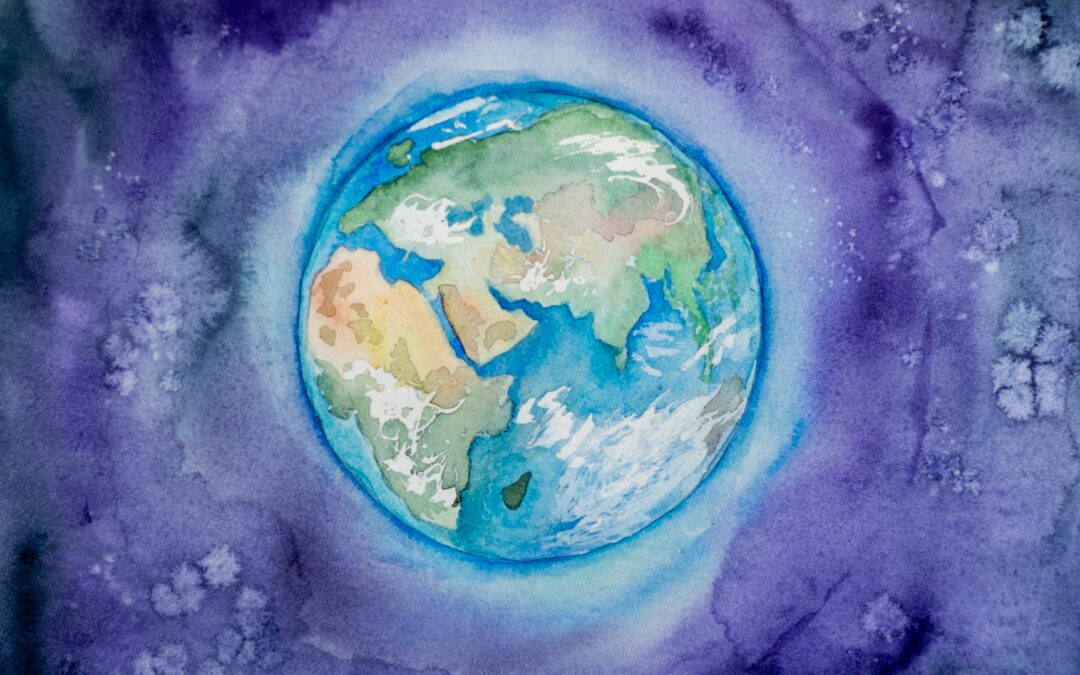
by Cortina Jenelle | Nov 14, 2023 | blog
As any of my clients and peers know, I LOVE a good reflection moment and if I had to name anything as an addiction, it would be my obsession with growth and transformation. Call me crazy, but that’s where the rubber meets the road.
Followers, hashtags and clickbait aside, many of us are looking for answers and are more compelled to be spending time building a library of knowledge and skills, now more than ever.
Facts.
These days, the more I share with people most physically proximate to me about creative facilitation, sustainability in action and how to build towards servant leadership in business, the more I realize that what makes sense to me, may be new news to someone else. Even though I had some wild spurts in my 20’s, I was more likely to be spotted at City Council meetings and drafting neighborhood action plans because I saw what was coming and got prepared. Enter scene, hump day highlights.
Back in 2015, I was working with some of the most amazing and forward-thinking minds in my city (Asheville, NC at the time) and although many of us were artists, creatives, designers, entrepreneurs and project managers, we saw a missing link between…
business + community,
community + sustainability and
sustainability + accountability
…we needed metrics to get people to care about their impact on the environment, the impact on the community and somehow making that more important than driving up their profits. Blending the worlds of business, community and sustainability was the true ROI and way to make sure our community was not run over by franchises + could create jobs + bring the environmentalists, DEIB consultants, creatives, engineers, business owners and government officials all together at the same table. We made it happen. And the tangible results are seen in the Asheville of today, still.
https://www.citizen-times.com/story/news/local/2015/01/26/good-business-means-business-good/22377365/
Takeaways?
– Social movements are not always just about protest. Social movements can happen in business, and are. Check out B Lab and #Bthechange Movement
– To get sh*t done, we must start with synergistic gatherings of a diverse skill set, a shared vision, clear strategy, a good whiteboard and some snacks.
– Separating business and people rendered our communities vulnerable and it’s not just up to the nonprofits to address. Let’s stop personifying business and see where we need to pivot to take care of our people and make THAT the legacy. Also, profits follow values so the money will still be made.
Photo by Elena Mozhvilo on Unsplash
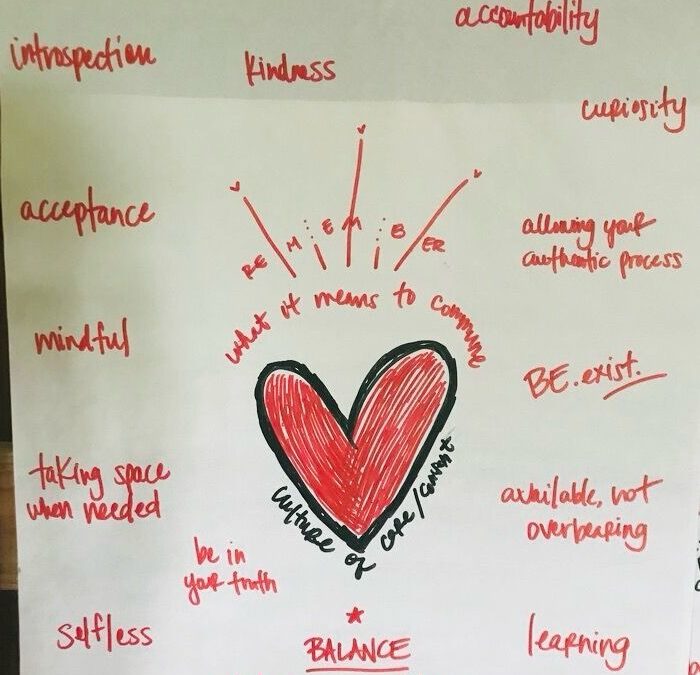
by Cortina Jenelle | Sep 12, 2023 | blog, creative coach, deib, entrepreneur coach, facilitation, sacred heart
Culture of care is often something I talk about in my work with young professionals, students, community partners and clients. It seems like more and more, these concepts need to be brought to the forefront in team spaces because it’s not standard for us these days. But, is there a such thing as too much compassion or empathy? In my DEIB work especially, people are concerned with where to draw the line about triggers and how to respond to conflict. It’s not always easy to track the ROI of human relations where we work and learn. But the lack of care in any space certainly be felt.
I have a proposition for you.
What if you proactively, or as soon as you can, establish some parameters and agreements for creating and sustaining a culture of care at your job, project or school? Meaning, the work and the mission is important but not at the expense of leaving people behind or sacrificing their well-being to get there.
Not having a true culture of care costs us good people, takes more time (spent on putting out little fires, addressing conflict or violations) and less time is spent on the actual work anyways so why not create a clear container so that people feel seen, heard, valued and respected. This leads to a clear path to express our boundaries, needs and discomforts *without* making someone also the scapegoat to fix it.
Is this something you could imagine using, or have used in your work or learning spaces?
Food for thought!

